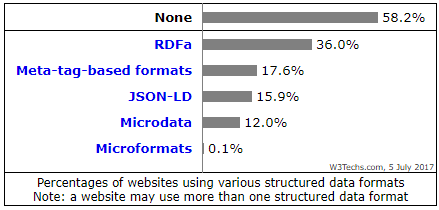Featured products and servicesadvertise here
Blog CategoriesAllNews AddToAny Adobe Commerce Adobe DTM AdRoll Advertising Networks Akamai Alibaba Amazon Amazon Associates Amazon CloudFront Angular Animate Apache ASP.NET ASP.NET Ajax Baidu Analytics Baidu Share Bitrix Blogger Bootstrap CDNJS CentOS Character Encodings China Telecom China Unicom Chitika Client-side Languages Cloudflare Cloudflare Server ColdFusion Compression Concrete CMS Content Delivery Content Languages Content Management Cookies CSS Frameworks Data Centers DataLife Engine Debian Default Protocol Https DigiCert DigiCert Group Discuz! DNS Servers Dojo DoubleClick Drupal Elementor Email Servers Ensighten Equativ ExoClick Fastly Fedora Flash Full Circle Studies Gemius Gentoo GlobalSign Gmail GoDaddy Group Google +1 Google Ads Google AdSense Google Analytics Google Hosted Libraries Google Servers Google Tag Manager GridPane Gunicorn Histats Hostinger Hotjar HTML HTML5 HTTP/2 HTTP/3 IdenTrust Image File Formats Infolinks IPv6 Java JavaScript JavaScript Libraries Joomla JQuery JQuery CDN JsDelivr Let’s Encrypt Liferay Linux LiteSpeed Lodash Markup Languages Matomo Matomo Tag Manager Meta Pixel Microsoft Microsoft Advertising Microsoft-IIS Modernizr MooTools New Relic Newfold Digital Group Nginx Node.js Operating Systems OVH PHP Plesk Plone PNG PopAds PrestaShop Prototype Python Quantcast React Red Hat Reverse Proxies Ruby RunCloud Scala Scientific Linux Sectigo Server Locations Server-side Languages SharePoint Shopify Silverlight Site Elements Snowplow Social Widgets SPDY Squarespace SSL Certificate Authorities Symantec Group Tag Managers Tailwind Tealium Team.blue Tomcat Top Level Domains Traffic Analysis Tools Twitter/X TYPO3 Ubuntu UIkit Umeng Underscore United Internet Unix Unpkg UTF-8 VBulletin Web Hosting Web Panels Web Servers Webflow Windows Wix WordPress WordPress Jetpack XHTML Yandex.Direct Yandex.Metrica YUI Library |
New surveys on the usage of structured data formatsPosted by Matthias Gelbmann on 5 July 2017 in News, Structured DataWhen search engines and other bots visit a site, they try to find out what the site is about, which organization or person owns it, what are the products or services offered on that site, and many other things. It is a challenging task for an algorithm to extract that information from text and pictures that are created for human visitors. That's where structured data comes in. A number of formats have been defined to embed such information for the purpose to make it easier for bots to extract and interpret it.
Meta-tag-based formats are second in popularity, used by 17.6% of the web. Meta tags by themselves offer not much structure, but some formats use them to further refine what web pages can present. Twitter Cards are the most popular of the meta-tag-based formats, used by 16.7%. They serve a similar purpose than Open Graph, but specifically for Twitter. JSON-LD, used by 15.9% of the websites, is a more general standard, not specifically targeted for social media. Its use is encouraged by Google, which explains its popularity as webmasters tend to do what Google asks them to do. The other formats in our survey, Microdata and Microformats are less popular, presumably because they are not actively pushed by one of the big players on the internet at the moment. High-traffic sites tend to use more structured data. For example, Open Graph is used by 54.8% of the top 1000 sites. Similarly, websites that are built with a content management system are much more likely to use structured data. For example, 89.6% of the sites that use JSON-LD are based on a CMS, compared to only 52.2% of all sites. More than 4 out of 5 JSON-LD formats are found on WordPress sites. Unsurprisingly, sites that use other modern web standards such as HTML5 or HTTP/2 are also much more likely to use structured data. There are also significant regional differences. Open Graph is particularly popular in Brazil, Australia and New Zealand as well as Norway and Finland. Twitter Cards are popular in the UK, Ireland and Spain, and JSON-LD in Australia, New Zealand and South Africa. USA ranks average in structured data adoption, whereas usage in Russia, Japan and China is significantly lower. We will start next month showing historical trends for structured data usage. We expect it to go up steadily. _________________ Share this page |


 LinkedIn
LinkedIn
 Mastodon
Mastodon
 Bluesky
Bluesky